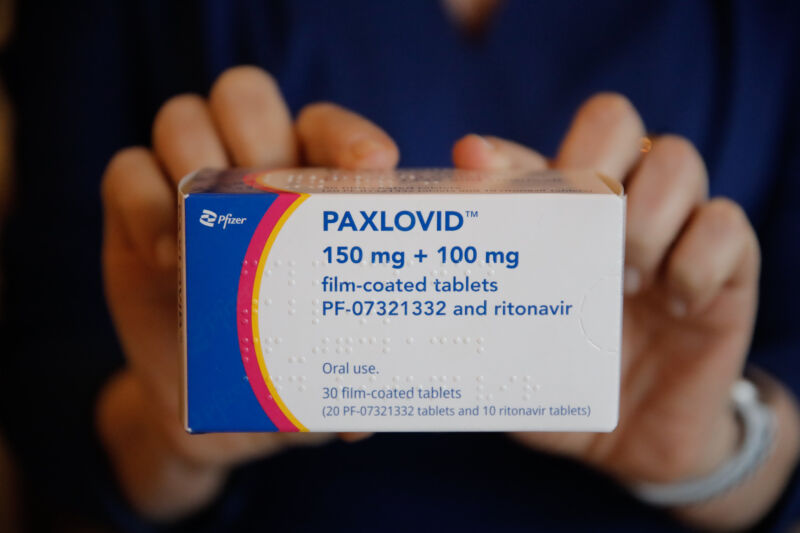
Pfizer on Wednesday revealed that it raised the list price of a course of Paxlovid—its lifesaving antiviral drug used to reduce the risk of severe COVID-19 in those most vulnerable—to nearly $1,400, more than double the roughly $530 the US government has paid for the treatment in the emergency phase of the pandemic.
Pfizer CEO Albert Bourla had noted in an investor call at the beginning of the week that the company would increase the price of Paxlovid as it moves from government distribution to the commercial market at the end of this year. But, he did not announce the new list price then. Instead, the company revealed the more than twofold increase in a letter to pharmacies and clinics dated Wednesday. The Wall Street Journal was the first to report the list price of $1,390 after viewing the letter.
A Pfizer spokesperson told the Journal that “pricing for Paxlovid is based on the value it provides to patients, providers, and health care systems due to its important role in helping reduce COVID-19-related hospitalizations and deaths.”
A cost-effectiveness analysis last year determined the value of Paxlovid at between $563 and $906 per treatment course, according to nonprofit drug-pricing watchdog The Institute for Clinical and Economic Review.
The list price is not necessarily what people and insurers will pay for the drug. The cost will be negotiated with pharmacy benefit managers (PBMs), independent middle-managers who oversee prescription drug benefits and copays for health insurers, federal programs, and other payers. A person familiar with Pfizer’s pricing decision told the Journal that the company set the higher list price so that it can offer larger discounts and rebates to PBMs and insurers.
But these rebates and discounts, which are currently not transparent, aren’t always passed on from PBMs to insurers and other payers. Thus, they can add to the overall skyrocketing costs of health care in the US—which by far spends more on health care than any other high-income country despite having many of the worst health outcomes of any other high-income country.
For now, those covered by Medicare or Medicaid and those who are uninsured will continue to have free access to Paxlovid through 2024 via a government program. And the government and Pfizer will offer assistance programs to reduce the price for several years afterward. Without assistance, people who are uninsured would face the steeply increased list price.
Still, with assistance and rebates, doctors and other advocates say higher list prices will lead to lower use of the drug, which is already inequitably distributed globally and underused in the US, particularly in settings where it is most beneficial.

